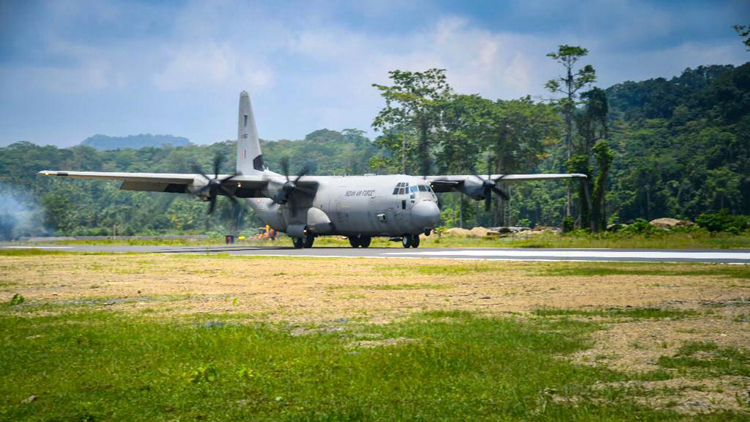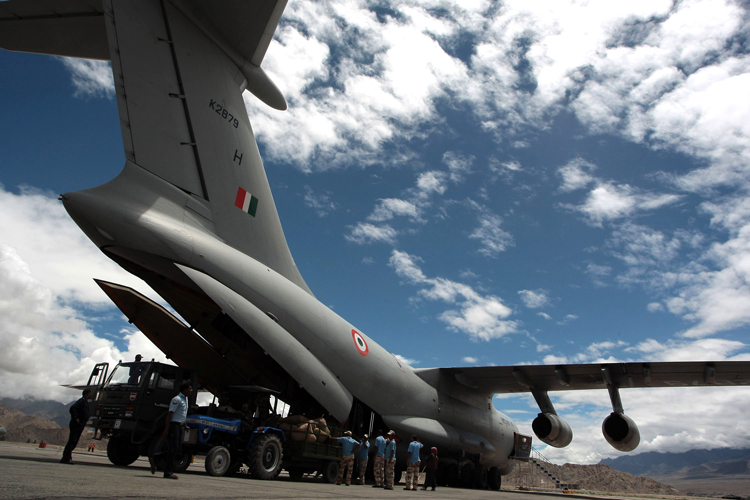INDIAN ARMED FORCES CHIEFS ON OUR RELENTLESS AND FOCUSED PUBLISHING EFFORTS

The insightful articles, inspiring narrations and analytical perspectives presented by the Editorial Team, establish an alluring connect with the reader. My compliments and best wishes to SP Guide Publications.

"Over the past 60 years, the growth of SP Guide Publications has mirrored the rising stature of Indian Navy. Its well-researched and informative magazines on Defence and Aerospace sector have served to shape an educated opinion of our military personnel, policy makers and the public alike. I wish SP's Publication team continued success, fair winds and following seas in all future endeavour!"

Since, its inception in 1964, SP Guide Publications has consistently demonstrated commitment to high-quality journalism in the aerospace and defence sectors, earning a well-deserved reputation as Asia's largest media house in this domain. I wish SP Guide Publications continued success in its pursuit of excellence.
Modernising Airfields
MAFI Phase-II is a good initiative but have we critically examined what features and systems our airfields (including improved infrastructure) must have to cater for possible terrorist attacks
 |
The Author is Former Director General of Information Systems and A Special Forces Veteran, Indian Army |

In May 2020, the Ministry of Defence (MoD) had signed contract for Modernisation of Air Field Infrastructure (MAFI) of 37 airfields for the Indian Air Force (IAF), Indian Navy (IN) and Indian Coast Guard (ICG) with Tata Power SED (TPSED) at a cost of nearly 1,200 crore for Phase-II of MAFI after the proposal was approved by Defence Minister Rajnath Singh.
Highlights of a release issued by the MoD are as follows:
- The MAFI Phase-II is a follow-on programme based on MAFI Phase-I that included upgradation of 30 airfields of IAF. The airfields modernised under MAFI Phase-I have been of immense benefit to both military and civil users.
- The project is a turnkey project that includes installation and commissioning of modern airfield equipment like CAT-II Instrument Landing System (ILS) and CAT-II Air Field Lightning System (AFLS), etc. The modern equipment around the airfield will also be directly connected to Air Traffic Control (ATC), thereby providing excellent control of the airfield systems to the air traffic controllers. The upgradation of navigational aids and infrastructure under this project would enhance the operational capability by facilitating air operations of military and civil aircrafts even in poor visibility and adverse weather condition while enhancing aerospace safety.
- The contract will provide impetus to the domestic industry in the prevailing situation. The project will give a boost to over 250 Micro, Small and Medium Enterprises (MSMEs) which will be directly benefited from being involved in execution of various activities of this project. This contract would aid in infusing the much needed capital in the market and boost employment generation in such fields as communications, avionics, information technology, apart from civil and electrical equipment and construction.
The contract for Phase-I of MAFI was also awarded by the MoD to Tata Power SED on March 16, 2011 at a cost of 1,215 crore, under which the company has already upgraded 30 airfields of the IAF, IN and the ICG.
The second phase of airfield modernisation is underway. The new features and systems to be installed will allow aircraft to take-off and land in adverse weather conditions
In response to a question seeking information on developments in airfield infrastructure in the country, Ajay Bhatt, Minister of State (MoS) for Defence, informed the Parliament on December 11, 2022 that the second phase of airfield modernisation is underway. He said that contract for the second phase of the modernisation project, worth 1,187 crore, was signed between the MoD and TATA Power SED on May 8, 2020. Describing the new features and systems to be installed, he said these will allow aircraft to take-off and land in adverse weather conditions, thereby improving on flight safety and frequency of flight operations, as also aiding flights with night operations.

The installation of systems like the CAT-II Instrument Landing System (ILS) and CAT-II Air Field Lightning System (AFLS) and the like no doubt is a good initiative. But should we not be looking beyond this – for example to ward of terrorist attacks like the one on the IAF Base in Pathankot in January 2016? Could a better infrastructure have denied terrorists entry to the Pathankot airbase? Have we critically examined what features and systems our airfields (including improved infrastructure) must have to cater for possible terrorist attacks, especially when technology is available to shut down the power and jam or interfere with the communicationssystem and radar coverage? Shouldn't requisite counter measures and backup systems be intrinsic to the airfields of the IAF, IN and the ICG? Have we wargamed swarm attacks against "individual" airfields?
Shouldn't requisite drone attack counter measures and backup systems be intrinsic to the airfields of the IAF, IN and the ICG
The continuing war in Ukraine has changed the thinking of many strategists who until now were professing that wars in future will be short, swift and intense, as also that global powers would not permit war to continue beyond a specific period of time especially if the two sides hold nuclear weapons. No doubt the US (in conjunction NATO) is using Ukraine as a proxy to fight Russia but the manner in which they are pushing Russia to the wall gives the impression that they do actually want a low-level nuclear exchange.
In the context of India, both China and Pakistan eye our territories and all three hold nuclear weapons. But a war is unlikely to be short and while we may say "this is not the era for war", war may be thrust upon us. The IAF Chief, Air Chief Marshal V.R. Chaudhari said at an event on December 11, 2022 that there is need for making preparations for prolonged wars instead of short and swift operations since new forms of threats have emerged, adding that there is need to increase logistics footprints, technology and tactics. He also said, "There are drones that travel at very slow speed, and then there are hypersonic weapons. Now, threats posed by information war are more pronounced."
Chaudhari then spoke about the depleting combat strength of the IAF due to phasing out of the MiG-21s which would be followed by the Jaguar and Mirage fighter jets and said that "the immediate gap is being filled by the Multirole Fighter Aircraft, 114 of which will be made in India with a foreign partner" without mentioning a timeframe.
Given the Chinese capability, extensive use of swarm drones should be expected against our forward airfield on "both fronts"
Looking at the damage caused by Ukrainian drones to aircraft on ground in forward Russian airbases, a close examination is warranted whether airfield infrastructure and airfield security should be strictly compartmentalised or should they be integrated as part of modernisation of airfields. Given the Chinese capability, extensive use of swarm drones should be expected against our forward airfield on "both fronts". A similar threat (using terrorists?) should be expected against airfields in the hinterland, especially where specialised aircraft like AWACS and advanced fighters are based.
Drone attacks on airfields can also involve chemical, biological, radiological and nuclear (CBRN) weapons. Interestingly, the Vietnamese Army has inducted indigenously developed CBRN drones (both ground and aerial) in two of its CBRN units. The six-wheeled drone, weighing 115 kg, has a manipulator arm that can lift weights of up to 23 kg. It features a gripper attachment that can be interchanged according to mission types, and the type of decontaminant involved. It is equipped with two video cameras, one each located on the drone's main body and manipulator arm. The 'Vietnam Robot CBRN' and the 'Airborne Radioactivity Monitoring System UAV' have both been developed by the Vietnamese Academy of Military Science and Technology (AMST).





